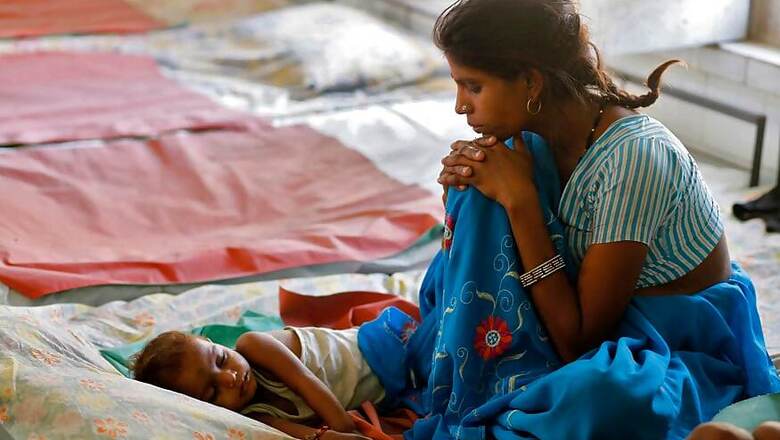
views
New Delhi: India’s hunger problem is “serious” and the country has tanked on the Global Hunger Index, with a poor rank of 100 among 119 nations.
The Global Hunger Index published on Thursday, co-authored by International Food Policy Research Institute (IFPRI), comes close on the heels of a WHO study published in The Lancet that has said India has the highest number of moderate to severely underweight children in the world.
The two back-to-back studies again highlight the dismal condition of children in India, where about one-fifth or 21% of the children under five are underweight and malnourished.
According to the report, these figures of malnourishment, child stunting and child wasting have shown no progress in the last 25 years.
In a statement, IFPRI’s South Asia Director PK Joshi has put the blame on “drought and structural deficiencies”.
The Global Hunger Index ranks countries as moderate, serious, alarming and extremely alarming in terms of their hunger problems. The higher the rank, the worse the news.
In 2016, India ranked 97 out of 118. However, other south Asian countries like Sri Lanka and Bangladesh have outperformed India this year. North Korea, which had ranked right below India last year has also moved up the ladder this time with a rank of 93.
Pakistan and the war-ravaged Afghanistan are still far behind us.
India’s poor score of 31.4, worse than last year’s 28.5, is a serious cause of concern. The Index notes, “Given that three-quarters of South Asia’s population resides in India, the situation in that country strongly influences South Asia’s regional score.”
It also endangers the Sustainable Development Goal of achieving zero hunger by 2030.
South Asia became the worst performing region in the world, with an average score of 30.9, followed by Africa, south of the Sahara scoring 29.4. Africa still fares better as many African nations are dotting the ‘alarming’ category, and the Central African Republic (CAR) occupying the ‘extremely alarming’ category.
One fifth of India’s children under five are wasting with weight very less than what is required with their height. One-third of the population or 38.4 percent are stunted, short for their age.
India’s wasting figures as compared to those of Djibouti, Sri Lanka and South Sudan, the report says, have made no progress in 25 years. In Asia, the lowest levels of hunger were in China, Fiji, Malaysia, Thailand and Mongolia.
However, India has made some progress with two national programmes, says the report. The Integrated Child Development Services (ICDS) and the National Health Mission (NHM), though are yet to reach an adequate coverage, have made substantial impact.
Though India has an action plan in place to rid the country of undernourishment by 2022, the Index came up with three points of concern.
The timely introduction of complementary food that weans a child away from exclusive breastfeeding dropped to 42.7 percent in 2016 from 52.7 percent in 2006.
In 2016, only 9.6 percent of children in the 6-23 months age bracket received an adequate diet with only 48.4 percent households having access to better sanitation facilities.




















Comments
0 comment